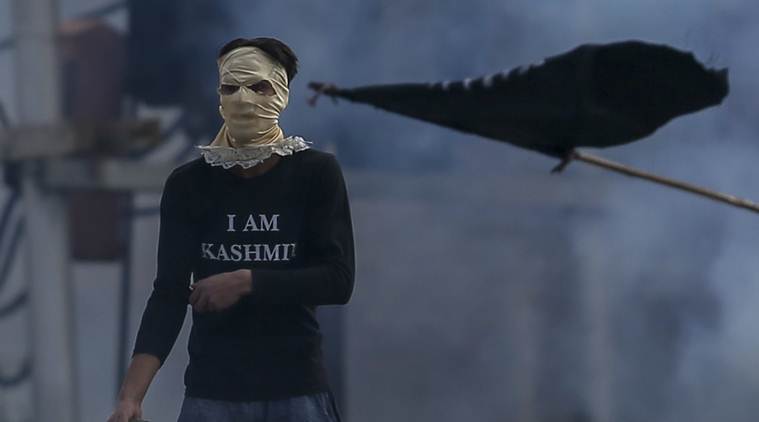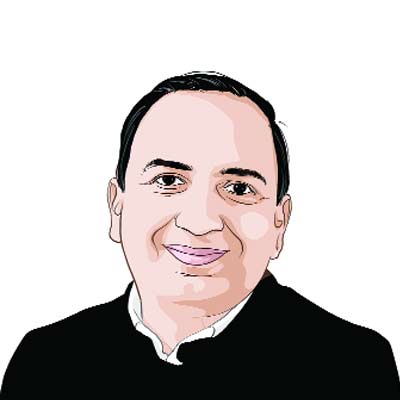The nuances of 35A
There is a powerful argument for not abrogating the Article. But we must also think beyond the binaries on it.

The first task of statesmanship is to throw cold water, not fan the fires of polarisation. But it looks like Kashmir’s tragedy, oscillating between a heavy-booted state, and a destructive radicalism, will continue. (Photo: AP)
The political legitimacy of the Indian state in Kashmir hangs on a very slender thread. This thread is the legitimacy of the Instrument of Accession, and the negotiations with Sheikh Abdullah in 1949, which led to the adoption of Article 370. We can heap the easy condescension of posterity on the constitutional arrangement that resulted. But the truth is this is the only mechanism that allows the Indian Union to legally exercise power in Kashmir. Abrogating that mechanism is not just abrogating a specific policy we may dislike; it is repudiating an important part of the legal edifice on which India’s claims rest. All that then remains is force and domination.
There is also the ground truth that the Indian state has a long record of betrayal of promises, democratic values and trust. The situation on the ground is impossibly oppressive, as if Kashmir is in the throes of a death wish. There is something to be said for a more nuanced debate on 35A, which I will come to shortly. But abrogating 35A under the circumstances would be playing with fire — the last act of betrayal.
As a matter of law, the status of the article has been considered by the Supreme Court in the past. In at least two significant cases, Puranlal Lakhanpal vs President of India and Others (1962) and Sampat Prakash vs State of Jammu & Kashmir (1969), the Court had settled one of the issues of contention, whether modifications could be carried out by a Presidential Order. Another interesting case, not on 35A directly but one which has a bearing on the constitutional status of Presidential Orders, is a judgment by Rohinton Fali Nariman and Kurian Joseph in State Bank of India vs Santosh Gupta.
In Madhav Rao Scindia vs Union of India, the Privy Purse case, the Court did uphold the idea that the Indian state needs to honour the terms and conditions laid out in different instruments of accession. It was in this spirit that in the Bachan Lal Kalgotra case, Justice Chinnappa Reddy, in a rare case of judicial forbearance, took the view that essentially laws governing Jammu & Kashmir are part of a political settlement, and it is essentially upto the political process to modify the terms of the settlement, not to look to judges to shortcircuit what should be a political negotiation. This may still be a wise position to take. In some ways, the Court is facing the consequences of shortcircuiting the political process in the Assam cases.
This is one route the Court can take. Politics must fix what politics broke. But this may not be entirely satisfactory. There are some real normative issues here. From a purely individual rights or economic integration perspective, the case for 35A is not clear-cut. At the broadest level, there is the contention of the petition that any restrictions that differentiate between residents and non-residents are inherently discriminatory. This contention is too wide: It would not only invalidate 35A with respect to Kashmir, but also with respect to several other states including Mizoram, Nagaland and Himachal. It is a measure of how communalised legal debates are that the focus is exclusively on Kashmir. But this contention would potentially invalidate any domicile requirements.
This may be a road we might want to go down. But this means giving up on another principle that underpins 35A. Under some circumstances, restrictions may be introduced to protect local cultural preponderance. This is the principle behind asymmetric federalism and a range of other protections. The challenge is that the application of this principle is deeply politicised. Which local cultural preponderances need to be protected is a function of social mobilisation, history or political sensitivity. So applications are inconsistent: Why should we worry about Assam’s demography being altered, if we are willing to alter Kashmir demography, as many BJP supporters claim? It will be foolish to think this question can be settled outside of political negotiations. Which is why there is a case for honouring treaties, and political settlement; finding some principle here will put stress somewhere else in the system.
There is another worry about blanket exemptions to states: The creation of judicial black holes. Let us, for a moment, assume that 35A is valid, that the J&K Assembly can define the meaning of the term resident. Does the exercise of this power come with no constraints, no requirement that they meet basic standards like Articles 14 or 21? The challenge with identity-based exemptions is they often give carte blanche to local authorities to persist with discriminatory practices. We have seen that in a number of cases were states and communities exercise this power. So one of the contentions in the 35A case is that the way the term resident is defined is discriminatory along gender lines; in some cases, it goes against principles of natural justice, denying long-standing residents rights.
So there are two options here. The first is to say that these injustices can be remedied by other means. The J&K High Court has been, as the Indian judiciary often does, partially remedying these deficiencies. The other option is to say that the Supreme Court can uphold 35A, without making the issue entirely a black box at the mercy of the J&K assembly, when it comes to issues of discrimination. In short, there are more nuanced options that balance competing principles.
But one cannot help remark on the surrealism of constitutional discourse on Kashmir. Ironically, 35A, which was meant to protect the demographic identity of Kashmir, proved to be a parchment barrier against one of the most significant episodes of ethnic demographic alteration: The expulsion of Kashmiri Pandits. Article 370, that underscores J&K’s special legal status, has actually given the Centre more untrammelled power over that state than it exercises over any other state. “Special status” here seems not like a recipe for peace, but a deadly joke all sides want to play. So while there is a powerful historical, legal and political argument for not abrogating 35A, it also behoves us to think beyond the cul-de-sacs in which we are stuck.
We can neither endure the historical patchwork we inherited, nor the means to go beyond it. The first task of statesmanship is to throw cold water, not fan the fires of polarisation. But it looks like Kashmir’s tragedy, oscillating between a heavy-booted state, and a destructive radicalism, will continue.
The writer is Vice-Chancellor, Ashoka University. Views are personal.
For all the latest Opinion News, download Indian Express App
More From Pratap Bhanu Mehta
- State and CapitalModi government has added an insidious dimension to the nexus. It is hidden in plain sight ..
- Mandela’s forgivenessIt seems alien in a world where resentment is not seen as imprisoning, freedom is freedom to hate...
- Common minimum resolveThe opposition needs to reopen a political debate on institutions, sign on to a charter for institutional reform..







































No hay comentarios:
Publicar un comentario